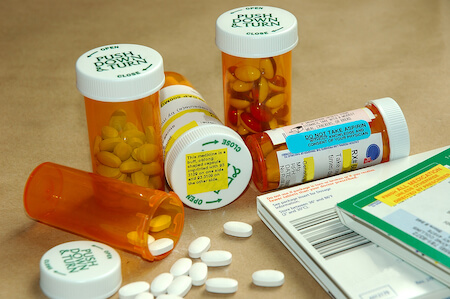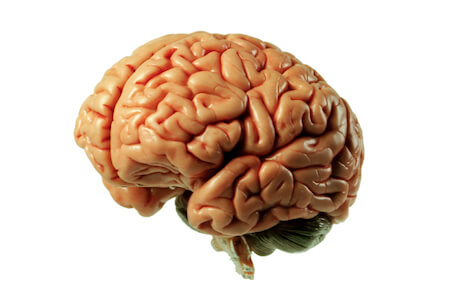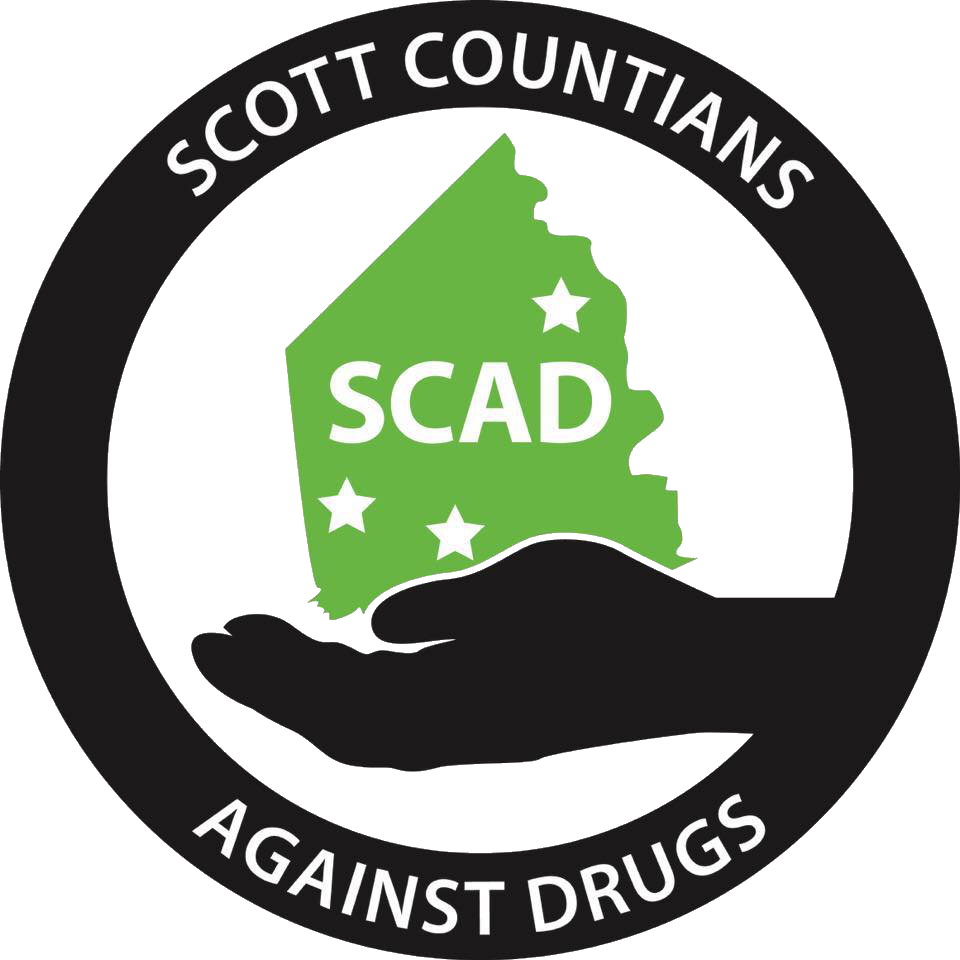About 52 million Americans older than 12 have used prescription medications nonmedically at some point in their lives. Many become addicted, and that process happens slowly. Some people don’t notice the moment at which they shift from recreational abuse to intense addiction, but when an addiction takes hold, it can be serious. Medical detox, followed by intensive therapy and support group work, can deliver relief.
Prescription medications are designed to treat diseases and/or the discomfort that diseases can bring.
For people with medical conditions like asthma or cancer, and for people with mental health conditions like depression or anxiety, prescription medications can mean the difference between a healthy and happy life or an upsetting and painful illness.

But some people use prescription medications for reasons that have very little to do with illnesses. These people take prescription medications recreationally, and there are a lot of people just like this in the world. In fact, according to the National Institute on Drug Abuse (NIDA), about 52 million Americans older than 12 have used prescription medications
nonmedically at some point in their lives.
Understanding Prescription Drug Categories
The main drugs of concern, when it comes to addiction, fall into three categories.
But all drugs lumped into a category tend to work in the same way and deliver the same kinds of benefits. These are the three types addiction experts keep close tabs on.
Opioids
 Medications in this class are designed to treat pain, but they don’t reduce inflammation, combat infection, or otherwise provide a real and tangible physical change that might make people feel better. Instead, these drugs tend to “trick” people in pain into ignoring their symptoms of discomfort. Their illnesses are very much in place, but they’re just a touch easier to overlook.
Medications in this class are designed to treat pain, but they don’t reduce inflammation, combat infection, or otherwise provide a real and tangible physical change that might make people feel better. Instead, these drugs tend to “trick” people in pain into ignoring their symptoms of discomfort. Their illnesses are very much in place, but they’re just a touch easier to overlook.
Opioids perform that trick by tinkering with chemical levels inside the brain. Typically, brain cells release a boost of a specific chemical, dopamine, when something rewarding or pleasant is happening. Opioids prompt the brain to release a lot of dopamine, so a person taking the drug might feel happy, at ease, or rewarded, even though something very painful is happening.
That same boost of reward can be terribly addictive, however, and people who take these drugs tend to need more and more of them to feel that same level of boost. As a result, opioids are terribly dangerous. Addicted people tend to take too much, and when they do, they suppress the urge to breathe. People can die due to this habit. In 2008 alone, according to NIDA, 14,800 overdose deaths were attributed to prescription opioids.
CNS Stimulants
Not surprisingly, given the name, the drugs in this class tend to boost or stimulate the brain. That speed comes about due to an added release of, or a blocking of reuptake of, specific brain chemicals that have to do with reward, attention, or focus. While it’s reasonable to assume that these drugs would make anyone feel jittery, people with mental health conditions that impede focus tend to have an unusual response to the effects these medications can deliver. For these people, most days are filled with twitching, nervousness, and worry. When they take CNS stimulants, they feel much more focused and attentive. They can get things done that they just never had the ability to finish in the past. For people with mental health conditions that benefit from CNS stimulants, abuse is rarely a problem. For example, in a study of young people with ADHD, published in the Journal of the American Academy of Child & Adolescent Psychiatry, only 22 percent of participants reported misusing their medications. Most used the drugs appropriately.
People with these conditions can sometimes be persuaded to sell them or make them available to others. Those other people can become intensely addicted to the boost in energy these drugs can bring.
CNS Depressants
 Drugs that fall into this category are designed to slow down the operation of the brain. Most of these drugs, according
Drugs that fall into this category are designed to slow down the operation of the brain. Most of these drugs, according
to Psychology Today, work by adjusting the brain neurotransmitter gamma-amniobutyric acid (GABA). This chemical is used in the brain’s communication system. When its levels are reduced or altered, cells can’t talk to one another very well, and the whole system slows down. Mental health conditions like anxiety or panic disorder can benefit from this slowing.
When people with these conditions feel an attack coming on, they can take a medication that eases brain function, and that can help them to maintain a mental equilibrium, rather than spinning off into anxiety. But tinkering with brain chemicals is a risky business, and laboratory tests suggest that altering GABA pathways can also lead to a boost in dopamine. That means people taking these depressants can sometimes feel sedation and euphoria at the same time. That can be intensely pleasurable, and it can lead some people to taking these drugs recreationally.
CNS depressants are sometimes abused alone, but some users mix these drugs with other drugs like cocaine or alcohol. When used in combination like this, CNS depressants can slow breathing rates to fatal levels.
Also, the changes these medications can bring can be somewhat persistent, so people who attempt to stop taking these medications can be profoundly ill as they recover. They might even experience seizures. As a result, people with a CNS depressant habit often need the help of medical treatment programs in order to recover.
Understanding the different types of drugs out there is an important part of understanding how addictions to prescriptions come about. It’s also vital to understand how specific drugs work. After all, each different medication comes with different risks. Knowing how each drug works within the human body could help families to understand how addictions develop and how treatments progress.
These are the drugs most commonly abused, along with information on how these drugs are made and abused.
Vicodin
This prescription narcotic medication is designed to treat moderate-to-severe pain, and it contains both hydrocodone and acetaminophen. It’s one of the most popular drugs in its class, according to IMS Health, as 131 million prescriptions for the drug were written in 2011.When Vicodin is taken orally, changes tend to hit the user’s brain slowly. Some users crush the pills and snort the powder, or they mix the powder with water and inject the substance into their veins. These methods can be intensely dangerous, as they allow Vicodin to hit the brain in minutes. The acetaminophen in Vicodin doesn’t cause addiction, but it’s also dangerous, as it must be processed by the liver. People taking high levels of Vicodin on a regular basis can do lasting damage to the liver, and sometimes, that damage results in death.
OxyContin
This medication is also made to assist with moderate-to-severe pain, but it doesn’t contain an analgesic. This drug contains pure oxycodone, so it’s a pure narcotic painkilling drug. For people with serious pain that just can’t be kept under control, OxyContin is an ideal solution. Since OxyContin is made for severe pain, manufacturers have developed extended-release formats that deliver painkilling help over a long period of time. According to the Centre for Addiction and Mental Health, an OxyContin pill can deliver relief for up to 12 hours, which is a huge benefit for people with cancer or other terribly painful illnesses. Unfortunately, people with addictions exploit that function by sniffing or injecting crushed pills. They get all the power of the drug at once, overwhelming their brains with pleasure.
Fentanyl
 This prescription painkiller is sold under brand names like Duragesic, Actiq, and Fentora. Fentanyl is the active ingredient in these medications. Among prescription narcotics, fentanyl is one of the most powerful substances available. As a result, it’s used only in cases of very severe pain that haven’t responded to other forms of therapy. A person with cancer pain that isn’t touched by OxyContin, for example, might be transitioned to fentanyl in time.
This prescription painkiller is sold under brand names like Duragesic, Actiq, and Fentora. Fentanyl is the active ingredient in these medications. Among prescription narcotics, fentanyl is one of the most powerful substances available. As a result, it’s used only in cases of very severe pain that haven’t responded to other forms of therapy. A person with cancer pain that isn’t touched by OxyContin, for example, might be transitioned to fentanyl in time.
Fentanyl is typically prescribed in shot or patch form. Abusers can take these drugs in the formats in which they’re prescribed, or they can alter those doses just a bit. For example, it’s not unusual for people with a fentanyl habit to break apart patches made for transdermal application and inject or swallow the gel inside. According to NIDA, some dealers have developed clandestine laboratories that allow them to manufacture the drug without stealing it or otherwise working with official chemists.
Morphine
This prescription painkiller is sold under brand names like:
- Avinza
- Duramorph
- DepoDur
- Astramorph
- Kadian
The active ingredient in all of these medications is morphine, which is a synthetic narcotic drug. It’s typically provided to people with moderate-to-severe pain, and the strength and dosing directions for the drug can vary, depending on the type of prescription provided.
The National Highway Traffic Safety Administration says morphine has a relatively short half-life, clocking in at just 1.5-7 hours. That means people who abuse this drug might binge on it, taking more and more and more to keep the high going.
Adderall
This medication is a CNS stimulant that’s mainly used to treat attention deficit hyperactivity disorder (ADHD). The active ingredient in Adderall is a form of amphetamine, mixed with other amphetamine variants. People taking Adderall in order to treat ADHD rarely abuse the drug. They follow their prescription instructions to the letter, and when they do, the drug delivers relief. This medication is also seen as a “cognitive enhancer” by people who don’t have ADHD, and they might be interested in buying and/or abusing the drug. It can be tempting for people with prescriptions to sell their pills.
Those with extended-release formulations of Adderall might be incredibly tempted to sell their doses, as these medications are highly sought after by addicts. By crushing the pills, they can get all of the drug’s benefits at once and get a huge high in the process. But pills with smaller doses can also be valuable, as users can just take more of them to get the same effect.
Ritalin
This prescription medication is also used to treat ADHD, and it also contains forms of amphetamine. According to CESAR, this medication comes in 5 mg, 10 mg, and 20 mg tablets that dissolve in water and are made for oral consumption, but people who abuse this medication often crush the tablets and either swallow or snort the powder.
Ritalin has a high abuse potential, as it can deliver feelings of both focus and euphoria. College students seem especially prone to Ritalin abuse, as the drug is often prescribed to young adults, and they often feel the need to stay awake for long hours and work on focused tasks during that time. These young adults might think they’re using the drug in a helpful manner, but an addiction can zap a student’s ability to succeed in school and handle the tasks of everyday life.
Valium
 This medication is a CNS depressant, used to treat anxiety disorders. It’s one of the oldest medications in its class, and it’s been the subject of hundreds of articles and dozens of rock-and-roll songs. When writers reach for a word that encompasses casual drug use by housewives living in the 1960s, they reach for the word “Valium.” The active ingredient in Valium is diazepam, which is a benzodiazepine. Valium can hit the user’s brain in minutes, and it can stay active for a long period of time. That makes Valium very dangerous from an addiction perspective, as it delivers big changes in short minutes.
This medication is a CNS depressant, used to treat anxiety disorders. It’s one of the oldest medications in its class, and it’s been the subject of hundreds of articles and dozens of rock-and-roll songs. When writers reach for a word that encompasses casual drug use by housewives living in the 1960s, they reach for the word “Valium.” The active ingredient in Valium is diazepam, which is a benzodiazepine. Valium can hit the user’s brain in minutes, and it can stay active for a long period of time. That makes Valium very dangerous from an addiction perspective, as it delivers big changes in short minutes.
Valium can also interact with a number of other substances, including painkillers, alcohol, and stimulants. People who abuse Valium may manipulate these interactions by mixing and matching purposefully. Some users stumble into life-threatening interactions without realizing the danger. An overdose can quickly take hold in people like this.
Xanax
This is another benzodiazepine medication, designed to assist people with a panic-based disorder. The active ingredient in Xanax, alprazolam, is relatively fast-acting, which makes this an ideal drug to use in response to a panic disorder. That speed of action also makes Xanax dangerous from an addiction standpoint, as this drug causes big changes users can feel in mere minutes. That’s the sort of overwhelming feeling that can lead to an addiction in no time at all.Xanax is delivered in 0.25 mg, 0.5 mg, 1 mg, and 2 mg strengths, and according to Medical News Today, Xanax is 10 times more powerful than Valium of the same dosage. So people taking 1 mg of Xanax are going to feel much more than people taking 1 mg of Valium.
Like all other benzodiazepines, Xanax interacts with a number of other substances, including alcohol, stimulants, and painkillers.
Ativan
This benzodiazepine prescription medication is typically provided in response to anxiety, but it’s also used as a therapy to combat insomnia. The active ingredient in Ativan, lorazepam, is fast acting, which again, makes this a drug of intense concern to experts. Anytime a medication can deliver big changes in a short time, it’s something that has the potential to cause an addiction. According to an overview article in the Journal of Clinical Psychiatry, lorazepam provides users with a rapid-onset high that they deem valuable, and lorazepam pills in the 4 mg range are worth about a dollar on the street. That means a lorazepam habit could get quite expensive in no time at all, as users might need to take dozens of pills every day to get the high they want.
Klonopin
This benzodiazepine medication is used to assist people with panic attacks. The active ingredient in Klonopin, clonazepam, is a fast-acting drug that produces significant changes in a very short period of time. That might explain why this particular drug is associated with a great deal of physical distress and harm. For example, Everyday Health reports that there were more than 76,000 emergency room visits were associated with Klonopin in 2011 alone. This seems to suggest that users are unaware of the power of Klonopin, or they might be mixing this drug with other substances like alcohol or painkillers, which can make Klonopin’s side effects much more severe.
Ambien
This CNS depressant medication is designed to assist people with short-term insomnia. The active ingredient in Ambien, zolpidem, soothes electrical activity inside the brain while producing a sense of amnesia. That allows people to nod off fast, and when they do, they can enter a restful and dreamless sleep. However, some people taking Ambien feel a sense of euphoria on the drug, and they just don’t feel sedated or sleepy. People like this might use and abuse this drug in order to experience joy and relaxation, and they could develop an addiction in time.
Ambien is a relatively fast-acting drug, but it’s also a long-lasting drug. People who take it are at deep risk for overdose, as they might take new doses long before the old ones have worn off.

There’s no bright light or bell flash when people move from drug use to drug dependence. It’s a process that happens gradually, without a lot of fanfare. But it’s an insidious process that can leave people feeling both physically and mentally unable to change the drug habits they’ve developed.
Drug dependence occurs when the user’s brain becomes physically incapable of functioning at an optimal level unless the drugs are present. The use has caused persistent changes that can’t be ignored or explained away. A person like this feels a chemical need for drugs, and it’s that need that drives continued use, even if the person wants to stop using.
According to the National Council on Alcoholism and Drug Dependence, signs of drug dependence include:
- Tolerance: People with this issue must take more and more of a drug in order to feel effects that once came with smaller doses.
- Withdrawal: When people attempt to stop taking the drug, they feel physically or mentally ill.
- Loss of control: An inability to control when the use happens or how much a person takes characterizes a loss of control.
- Inability to stop use: As much as a person like this might want to quit or cut back, it’s impossible to do so.
- Continued use despite negative consequences: Arrests, medical crises, or other terrible life events can’t deter the use.
- Intense focus: For someone like this, nothing is as important as the drug. Family, friends, pets, careers, and hobbies all pale in importance.
How Treatment Centers Help
 Drug addiction treatment has the power to help people leave a prescription pill habit behind. Unfortunately, few people in the United States either know about or take advantage of the help that comes through an addiction treatment center. For example, according to NIDA, about 22.7 million Americans needed help for an addiction issue in 2013, but only 2.5 million people got help in a specialty facility.
Drug addiction treatment has the power to help people leave a prescription pill habit behind. Unfortunately, few people in the United States either know about or take advantage of the help that comes through an addiction treatment center. For example, according to NIDA, about 22.7 million Americans needed help for an addiction issue in 2013, but only 2.5 million people got help in a specialty facility.
People with a prescription drug habit are among the drug users that most often need specialty help. That’s because they often need medical detox services. People abusing CNS depressants can experience seizures when they try to quit, while people who use prescription opioids may feel flu-like symptoms when they withdraw. A medical detox program can use medication therapies and alternative medicine techniques to soothe distress, which makes withdrawal both comfortable and safe.
Drug rehab programs for prescription drugs often combine medication therapy with behavioral therapies, per NIDA. That means people who enroll in these programs have the opportunity to work with therapists in order to understand how the issue came about and what might be done to keep it from coming back. Therapy allows people to practice their work, so they can emerge from the programs with skills that are honed and up to the relapse challenges the real world provides.
Relapse is a very real possibility. In a study of the issue, published in the Irish Medical Journal, 91 percent of people with a prescription painkiller addiction treated in a program reported a relapse, most within one week of leaving the program.
Relapse programs can help, as they provide people with knowledge about how the relapse process works. At the end of a program like this, people might know that they’ll be tempted to use again, and they’ll know to access touchup services after that first slip. That arrests the slide, and keeps a slip from blowing up into a full-blown addiction.
Relapse programs can also help people to spot their triggers, so they’ll be less likely to put themselves at risk in the future.
Getting Help
A prescription painkiller addiction doesn’t have to be permanent. With the right help and good follow-up care, people with persistent addiction issues can learn to keep things under control, so they can live healthy and happy lives in the future.

